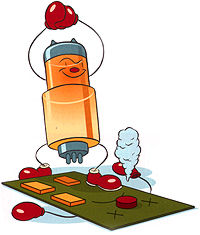Stereophile used to (and maybe still does) consider clipping to be 1% THD, which some might say was never "fair" to SET amps because without exceeding 1% you can't get anywhere near the max power output spec of any SET tubes without feedbavk. Max power output is 5% THD in many or most DHT datasheets for example. I've seen some pentodes specify max power at 10% THD. Now Ralph keeps saying most SET amps don't use feedback. I don't have any idea when that survey was taken, but I do know several that do. What is the topology of your SET amp that generates 35W at 1% THD. Which tubes does it use?
They used 1% basically as a reference for all amps has nothing to do with testing to clipping . In the real days of testing all amps were driven to actual clipping and observed measured performance as to even clipping , clip recovery etc , unfortunately those not surviving, ie. By letting the magic smoke out, well , led to alot of tears and political issues ..
So hence forth , the obligatory 1% thd rule , lower the bar because all amp lives matters .. !
Regards

















